What type of fertilizer does my tree need?
There are many available forms of fertilizers on the market today. Knowing what fertilizer to use for your tree is based on knowing what your tree needs. Trees require certain elements obtained from the soil for all of their growth and metabolic functions. Nutrients that are used in large quantities for many various functions are known as macro nutrients. The Macro nutrients that trees need are Nitrogen (N) Phosphorus (P) and Potassium (K). Also needed by trees in relatively large quantities are Magnesium (Mg) and Calcium (Ca). These are known as secondary nutrients but are still essential for proper plant health.
Just a few things that these nutrients do for your trees
- Nitrogen is a part of all living cells and is a necessary part of all proteins, enzymes and metabolic processes. Nitrogen is an important ingredient in the photosynthesis process of trees.
- Phosphorus is essential to the distribution and storage of that energy in the form of sugars and starches. Without sufficient phosphorus, plants will be stunted. Phosphorus is also important for healthy root production and is needed for healthy flower blossoms.
- Potassium is used as an enzyme to produce proteins and sugars. Potassium is essential for fruit production and in the prevention of diseases, and also for water regulation.
Along with these macro-nutrients trees use a whole host of other “micro-nutrients” ie. Iron, Manganese, Boron, Copper, Zinc, etc.
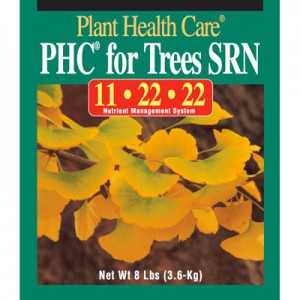 Fertilizer types
Fertilizer types
Most complete fertilizers contain the macro nutrients that a tree needs. Nitrogen, Phosphorus,and Potassium ( NPK). The fertilizer will have an analysis, or guaranteed analysis, listed on the label that gives the composition of the fertilizer expressed as a percentage by weight of the available N P K, always listed in that order. For example, the tree fertilizer shown here, with an analysis of 11-22-22 contains 11 percent Nitrogen, 22 percent Phosphorus, and 22 percent Potassium. Of coarse, as stated in our previous post, Fertilizing Your Trees and Shrubs – part 1, determining what nutrients your tree needs can only be accurately assessed by a lab tested soil and plant analysis. Apply only the elements that are in short supply. In the absence of a plant and soil analysis, a fertilizer with a ratio of 3-1-1 or 3-1-2 should be used. You can select fertilizers that can supplement some of the micro nutrients a tree needs if there is a deficiency. An arborist should have knowledge of local soil and environmental conditions. The arborist may be able to make a fertilization recommendation simply by examining your trees and yard. This saves the client time and money. On other occasions the problem may be more complex and the arborist will recommend a soil and/or foliar analysis to determine the problem.
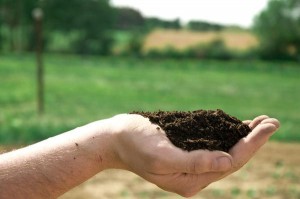
Organic fertilizers are very safe to use. Though they do not provide as much of an immediate boost of soil fertility, organic fertilizers are a better choice for the long term health of your trees and the soil they grow in.
Organic or inorganic fertilizers?
Fertilizers are available in either organic or inorganic forms. One of the major differences in most inorganic fertilizers is that they release their element relatively quickly once they are dissolved in water. Organic fertilizers release their elements more slowly. This can be great benefit as the
elements do get quickly leached away if they are not used by the tree immediately.With regular application, inorganic, chemical based fertilizers will negatively affect soil pH. For many trees, it is hard to impossible to take up nutrients in the roots when the soil is an

While inorganic, or synthetic fertilizers are very convenient and easy to work with, over time they can build up toxic residue in the soil that will actually detract from good plant health care. Also you want to be careful working with them as they do contain harmful chemicals
acidic environment. Organic fertilizers also have the advantage of having much lower salt index.
Salt index is simply the measure of the salinity of a fertilizer. Salts tend to draw water out of the trees root system resulting in less water uptake for the tree. This is why, when using inorganic fertilizers, it is important to not over apply. The high salt index of those fertilizers will cause damage known as “salt burn”. Organic fertilizers are much less likely to “burn” your trees and shrubs.
Liquid or dry fertilizers ?
Tree fertilizers can be applied by a few basic means; dry vs. liquid applications, surface vs. sub surface applications; foliar sprays and trunk injections. Though foliar sprays and trunk injection do have there place in tree care, soil applications of fertilizer are most often the preferable means of delivery. Dry surface applications of fertilizer are made by broadcasting a pelletized or granulated fertilizer evenly over the surface of the earth, directly in the root zone of the tree or shrub. This method can be most helpful in instances where you have a large area of plants to fertilize as it fairly quick and easy. To avoid loss of the efficacy of the fertilizer from exposure to the sun, applications should be made immediately before rain or should be watered in by irrigation. Liquid surface applications can likewise be quick and inexpensive. In other words, simply mixing a solution of fertilizer and pouring directly onto the soil surface around the trees’ root zone. This method also has some limitations. Run off can easily occur where the liquid fertilizer simply flows along the surface of the soil before it is absorbed and runs off target. Both dry and liquid surface application should be avoided when fertilizing trees growing in areas of turf. Where the fertilizer application are is covered with turf, the turf will take a large portion of the applied fertilizer before the nutrients ever make it to the roots of the trees and shrubs.
In most instances, sub surface liquid fertilizer application ( otherwise known as, “Deep Root Feeding”) is going to be the ideal means to fertilize your trees. Injecting liquid fertilizer at a depth of about 6″-8″ within the root zone delivers the nutrients right to the roots of the tree, bypassing any turf grass or other plant material.
Bio fertilizers
One more very important category of fertilizers to know about is the “bio fertilizers”. These fertilizers actually contain living micro-organisms that, when applied, will colonize the soil and tree roots. These beneficial micro-organism perform many many functions in the soil; increase nutrient and water uptake; increase drought tolerance; increase disease resistance; 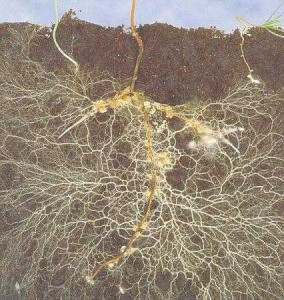 increase root mass, etc. If you were to take on cubic inch of healthy forest soil, and analyzed it under a microscope you would find over 2,000,000,000 of these living micro organisms. If these bio-fertilizers are used in combination with good mulching and composting practices then you can , in essence, recreate the rich, bio-diverse soil food web of the forest floor for your landscape trees. These products are, in a certain sense, not actually fertilizers as they do not have any inherent N P K analysis associated with them. The manner in which they work is this. The billions of living micro organisms that you inoculate the soil with when you inject them into the root zone, begin to break down and digest organic matter . This matter is already present in the soil and the microbes make the nutrients available for the trees. The microorganisms in bio-fertilizers restore the soil’s natural nutrient cycle and build soil organic matter. Through the use of bio-fertilizers, healthy plants can be grown, while enhancing the sustainability and the health of the soil.
increase root mass, etc. If you were to take on cubic inch of healthy forest soil, and analyzed it under a microscope you would find over 2,000,000,000 of these living micro organisms. If these bio-fertilizers are used in combination with good mulching and composting practices then you can , in essence, recreate the rich, bio-diverse soil food web of the forest floor for your landscape trees. These products are, in a certain sense, not actually fertilizers as they do not have any inherent N P K analysis associated with them. The manner in which they work is this. The billions of living micro organisms that you inoculate the soil with when you inject them into the root zone, begin to break down and digest organic matter . This matter is already present in the soil and the microbes make the nutrients available for the trees. The microorganisms in bio-fertilizers restore the soil’s natural nutrient cycle and build soil organic matter. Through the use of bio-fertilizers, healthy plants can be grown, while enhancing the sustainability and the health of the soil.
So as you an see there are many options when it comes to tree and shrub fertilizing. Understanding the environment that your trees are growing in and and finding out what they need will go a long way in making the right decisions. Likewise, understanding the difference from one product to the next will help guide you to what the best coarse of action to take for the health of your trees and shrubs.
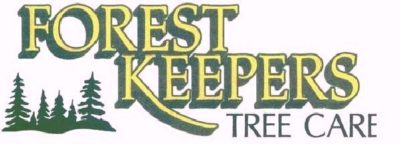
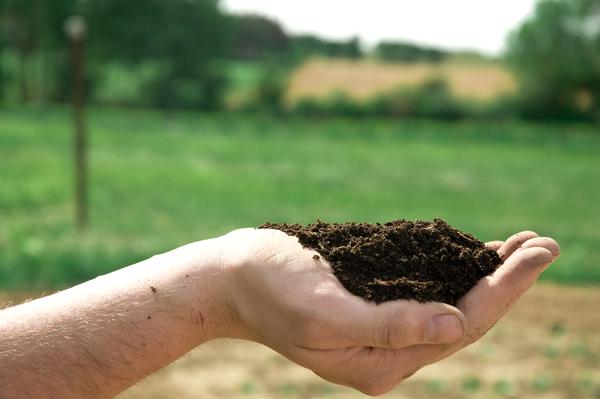
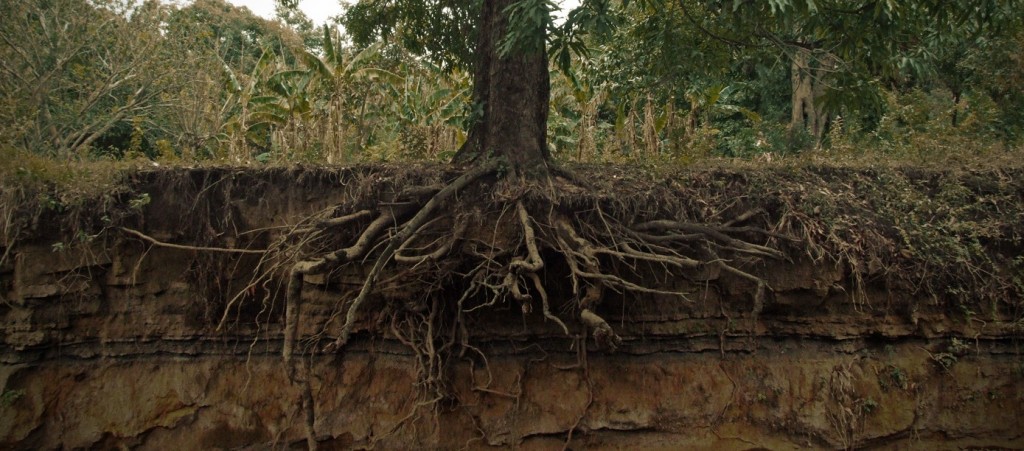
Comments
I’m considering getting my trees fertilized because I’m not sure they’re getting the nutrients they need just from the ground right now, and while I’m considering having a service do it, it’s good to know what kind I want. I had no idea that the three numbers on the front indicated different levels of nitrogen, phosphorus, and potassium. Knowing that, still, I’ll have to take your advice and talk to an arborist to make sure I get the right levels for my cherry trees.